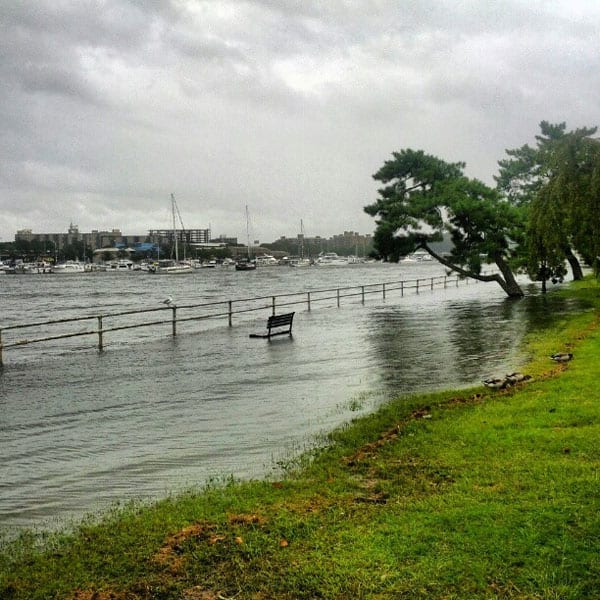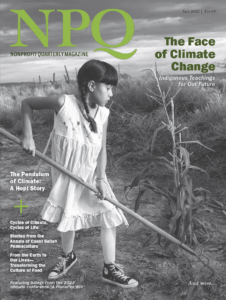
November 23, 2018; New York Times and Washington Post
A major scientific report issued by 13 federal agencies on Friday, November 23rd, “presents the starkest warnings to date of the consequences of climate change for the United States, predicting that if significant steps are not taken to rein in global warming, the damage will knock as much as 10 percent off the size of the American economy by century’s end,” write Coral Davenport and Kendra Pierre Lewis in the New York Times.
Participating federal agencies are the following:
- Department of Agriculture
- Department of Commerce
- Department of Defense
- Department of Energy
- Department of Health and Human Services
- Department of the Interior
- Department of State
- Department of Transportation
- Environmental Protection Agency
- National Aeronautics and Space Administration
- National Science Foundation
- The Smithsonian Institution
- U.S. Agency for International Development
The report is mandated by Congress. This is the fourth such report; the first one came out in 2000, and the last one prior to this was in 2014.
In a 1,656-page assessment, the report lays out the expected impact of climate change on health, the economy, and the environment. Among its findings, the study’s authors indicate that Midwest agricultural yields are likely to fall to 1980s levels. As Davenport and Lewis write, “Key crops, including corn, wheat, and soybeans, would see declining yields as temperatures rise during the growing season.”
Brady Dennis and Chris Mooney of the Washington Post add that the report “finds that the continental United States already is 1.8°F warmer than it was 100 years ago, surrounded by seas that are on average nine inches higher and being wracked by far worse heat waves than the nation experienced only 50 years ago…by 2050, the country could see as much as 2.3 additional degrees of warming in the continental United States.” As one example of how temperatures are likely to be affected: Phoenix, which experienced about 80 days per year over 100°F around 2000, could expect between 120 and 150 such days by century’s end.
Sign up for our free newsletters
Subscribe to NPQ's newsletters to have our top stories delivered directly to your inbox.
By signing up, you agree to our privacy policy and terms of use, and to receive messages from NPQ and our partners.
The study forecasts droughts in the Southwest that will curb hydropower generation and limit water supplies. In Alaska, the study envisions that a loss of sea ice will cause coastal flooding and force communities to relocate. The study also reports the potential for saltwater contamination of drinking water in Puerto Rico and the Virgin Islands. Other impacts identified include increased deaths from heat waves and a greater propensity for disease to spread.
As Brad Plummer and Henry Fountain, also writing in the New York Times, detail, there were also some other novel findings in the study. Three of these are the following:
- Recognition that some predicted impacts have already arrived: The 2014 federal study predicted coastal flooding. Now, both Miami, Florida and Charleston, South Carolina are experiencing a “record number of ‘nuisance flooding’ events during high tides.”
- A greater attention to interactive effects: For example, Superstorm Sandy’s flooding of subway and highway tunnels made electrical repairs more difficult. In California, droughts affect both the water supply and energy production, since hydroelectric power is a major energy source.
- A need to prepare for coastal flooding: The study authors warn that the “potential need for millions of people and billions of dollars of coastal infrastructure to be relocated in the future creates challenging legal, financial, and equity issues that have not yet been addressed.”
The report comes just one month after the Intergovernmental Panel on Climate Change, a group of scientists convened by the United Nations, released a report that forecasts a “mass die-off” of the coral reef by 2040 and “a world of worsening food shortages and wildfires” resulting from continued climate change, among other things. The federal report reinforces these findings, although its focus is primarily on the US.
The authors suggest three possible policy steps to mitigate climate change effects: putting a price on greenhouse gas emissions (e.g., taxing carbon); government regulation of greenhouse gasses; and spending public money on energy research.
For the moment, the White House has largely dismissed the report, claiming that the scientists’ findings were based on the “most extreme scenario” of global warming. Philip Duffy, who is president of the Woods Hole Research Center, points out that there’s “a bizarre contrast between this report, which is being released by this administration, and this administration’s own policies.”—Steve Dubb













